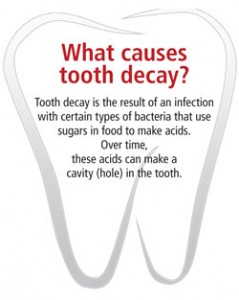March 27th, 2014
Dr. Chavez, a colleague of Dr. Hughes, has developed an easy to remember formula to help orthodontic patients remember important information about maintaining good oral hygiene. He calls it the ‘Rule of 5’s’. Dr. Hughes would like to share this clever mnemonic (memory) device with her orthodontic patients.
The ‘Rule of 5’s’
1. There are 5 places to brush: (1) Where the teeth meet the gum lines, In toward the gums; (2) under the wire; (3) on top of the wire; (4) on top of the teeth; (5) in back of the teeth
2.There are 5 times during the day to brush: after breakfast, after lunch or after school, after dinner, after snacks and before bed.
3. Spend 5 minutes brushing each time.
4. At the end of the day, spend an additional 5 minutes to floss and use fluoride rinse.
March 11th, 2014

Congratulations to Dr. Hughes on completing her board recertification process! This is an honor bestowed to less than 25% of all orthodontists in the country.
Is Every Orthodontist Board-Certified?
No. There is a difference between licensed and Board Certified. All practicing orthodontists are licensed; only about 25% of all orthodontists are Board Certified as well. Certification as a Diplomate of the American Board of Orthodontics signifies a unique achievement—a large step beyond the two to three years of advanced education required for a dentist to become a specialist in orthodontics. The current procedure requires the candidate to demonstrate actual accomplishments in patient care with detailed case reports on the treatment provided for a broad range of patient problems. Board certification is a unique honor following a process by which an individual orthodontist is thoroughly examined by an expert panel as to orthodontic knowledge and clinical skills.
What is the American Board of Orthodontics? Are there other recognized boards in orthodontics?
No. Today, it is the only certifying board recognized by the American Dental Association for the specialty of orthodontics. The American Board of Orthodontics (ABO) was founded in 1929 and is the oldest specialty board in dentistry. Key objectives of the ABO are to elevate the standards the practice of orthodontics, and to certify continued proficiency and excellence in orthodontics.
If Board Certification is voluntary, why would an orthodontist become board certified?
The passage of the examination process is a demonstration to the dental profession and the general public of the orthodontist’s pursuit of continued proficiency and excellence in orthodontics. It is a representation of a commitment by a licensed specialist that he/she has the necessary knowledge base and skills to treat patients to the highest of standards. It exemplifies a practitioner’s commitment to continue to keep abreast of the latest advances in patient care, and to continue to deliver these latest advances to patients.
What is the process by which orthodontists may become board certified?
Since its founding in 1929, the process has changed many times. Today, the process involves a thorough Written Examination covering all areas of information on which an orthodontist should be knowledgeable. Successful passage allows the orthodontist to then present detailed case reports, which demonstrate a history of excellence in patient care. These cases are evaluated by expert examiners of the Board during a Clinical Examination. An Oral Examination is then given, and the applicant is tested on a wide variety of academic and clinical topics. Certification is then awarded for a time-limited period and the orthodontist must re-examine on a periodic basis to maintain the board certified status.
For further information on the American Board of Orthodontists, click below: http://www.americanboardortho.com/public/
February 21st, 2014
Tooth decay is the most common chronic disease in children, despite the fact that it’s almost entirely preventable. More that 40 percent of children ages 2 to 11 have had a cavity in their primary (baby) teeth, and more than two-thirds of 16 to 19-year-olds have had a cavity in their permanent teeth.
Developing good habits at an early age and scheduling regular dental visits helps children get a good start on a lifetime of healthy teeth and gums. Good oral hygiene practices such as thorough brushing with fluoride toothpaste can help keep children from getting cavities.
Make sure to brush two times a day for two minutes (that’s 4 times a day for those of you with braces), floss once a day and see your dentist every 6 months.

February 1st, 2014
Each February, the American Dental Association (ADA) sponsors National Children's Dental Health Month to raise awareness about the importance of oral health. Developing good habits at an early age and scheduling regular dental visits helps children get a good start on a lifetime of healthy teeth and gums. As an active member of the ADA,Dr. Hughes strongly supports this effort! She and Brandy will be headed out to the local Natick Schools this month to hand out toothbrushes, dental information and give fun class room presentations on dental health. Hope everyone has a wonderful February and don't forget to brush 2xday for 2 min (that's 4 times a day for those of you with braces), floss 1xday and see your dentist every 6 months.




